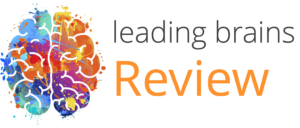References
Brykman, K. M., and King, D. D. (2021). A Resource Model of Team Resilience Capacity and Learning. Gr. Organ. Manag. doi:10.1177/10596011211018008.
Cassar, A., and Rigdon, M. L. (2021). Prosocial option increases women’s entry into competition. Proc. Natl. Acad. Sci. U. S. A. 118. doi:10.1073/pnas.2111943118.
Cedeño Laurent, J. G., Macnaughton, P., Jones, E., Young, A. S., Bliss, M., Flanigan, S., et al. (2021). Associations between acute exposures to PM2.5and carbon dioxide indoors and cognitive function in office workers: A multicountry longitudinal prospective observational study. Environ. Res. Lett. 16. doi:10.1088/1748-9326/ac1bd8.
Fujimoto, A., Murray, E. A., and Rudebeck, P. H. (2021). Interaction between decision-making and interoceptive representations of bodily arousal in frontal cortex. Proc. Natl. Acad. Sci. U. S. A. 118. doi:10.1073/pnas.2014781118.
Goulet-Pelletier, J. C., Gaudreau, P., and Cousineau, D. (2021). Is perfectionism a killer of creative thinking? A test of the model of excellencism and perfectionism. Br. J. Psychol. doi:10.1111/bjop.12530.
Guarana, C. L., Stevenson, R. M., Jeffrey Gish, J., Ryu, J. W., and Crawley, R. (2022). Owls, larks, or investment sharks? The role of circadian process in early-stage investment decisions. J. Bus. Ventur. 37. doi:10.1016/j.jbusvent.2021.106165.
Heinrich, A., Müller, F., Stoll, O., and Cañal-Bruland, R. (2021). Selection bias in social facilitation theory? Audience effects on elite biathletes’ performance are gender-specific. Psychol. Sport Exerc. 55. doi:10.1016/j.psychsport.2021.101943.
Herbst, U., Dotan, H., and Stöhr, S. (2017). Negotiating with work friends: examining gender differences in team negotiations. J. Bus. Ind. Mark. 32. doi:10.1108/JBIM-12-2015-0250.
Kim, S., Cho, S., and Park, Y. (2021). Daily microbreaks in a self-regulatory resources lens: Perceived health climate as a contextual moderator via microbreak autonomy. J. Appl. Psychol. doi:10.1037/apl0000891.
Knowles, S., Servátka, M., Sullivan, T., and Genç, M. (2021). Procrastination and the non-monotonic effect of deadlines on task completion. Econ. Inq. doi:10.1111/ecin.13042.
Kühn, S., Mascherek, A., Filevich, E., Lisofsky, N., Becker, M., Butler, O., et al. (2021). Spend time outdoors for your brain–an in-depth longitudinal MRI study. World J. Biol. Psychiatry. doi:10.1080/15622975.2021.1938670.
Maymin, P. Z., and Langer, E. J. (2021). Cognitive biases and mindfulness. Humanit. Soc. Sci. Commun. 8. doi:10.1057/s41599-021-00712-1.
Moutoussis, M., Garzón, B., Neufeld, S., Bach, D. R., Rigoli, F., Goodyer, I., et al. (2021). Decision-making ability, psychopathology, and brain connectivity. Neuron 109. doi:10.1016/j.neuron.2021.04.019.
Muir (Zapata), C. P., Sherf, E. N., and Liu, J. T. (2021). It’s not only what you do, but why you do it: How managerial motives influence employees’ fairness judgments. J. Appl. Psychol. doi:10.1037/apl0000898.
Riedl, C., Kim, Y. J., Gupta, P., Malone, T. W., and Woolley, A. W. (2021). Quantifying collective intelligence in human groups. Proc. Natl. Acad. Sci. U. S. A. 118. doi:10.1073/pnas.2005737118.
Sy, T., and van Knippenberg, D. (2021). The emotional leader: Implicit theories of leadership emotions and leadership perceptions. J. Organ. Behav. 42. doi:10.1002/job.2543.
Thöni, C., and Volk, S. (2021). Converging evidence for greater male variability in time, risk, and social preferences. Proc. Natl. Acad. Sci. U. S. A. 118. doi:10.1073/PNAS.2026112118.
Walker, A. R., Navarro, D. J., Newell, B. R., and Beesley, T. (2021). Protection from uncertainty in the exploration/exploitation trade-off. J. Exp. Psychol. Learn. Mem. Cogn. doi:10.1037/xlm0000883.
Yang, V. C., Galesic, M., McGuinness, H., and Harutyunyan, A. (2021). Dynamical system model predicts when social learners impair collective performance. Proc. Natl. Acad. Sci. U. S. A. 118. doi:10.1073/pnas.2106292118.
Yin, Y., Savani, K., and Smith, P. K. (2021). Power Increases Perceptions of Others’ Choices, Leading People to Blame Others More. Soc. Psychol. Personal. Sci. doi:10.1177/19485506211016140.
Yoon, H., Scopelliti, I., and Morewedge, C. K. (2021). Decision making can be improved through observational learning. Organ. Behav. Hum. Decis. Process. 162. doi:10.1016/j.obhdp.2020.10.011.













